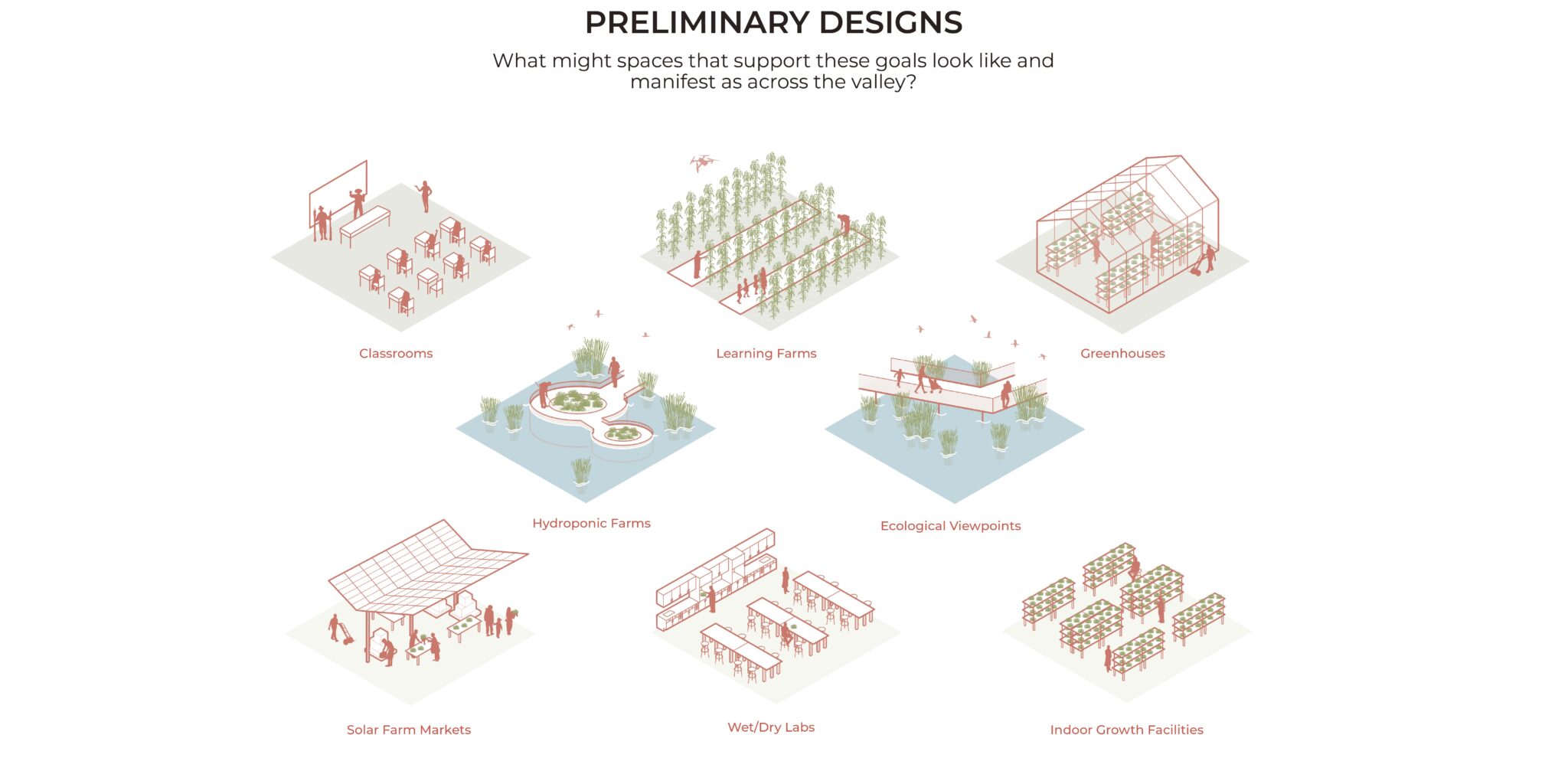Three Campuses Fostering a Legacy of Agricultural Innovation, Appreciation, and Collaboration Across the Pioneer Valley
By

Melissa Jacobs
Master of Architecture | ARCH 7140 Thesis Project
Due to inclement weather, all classes at Northeastern University are canceled for today, Tuesday, February 28, 2023. Click here for additional information. Test

Three Campuses Fostering a Legacy of Agricultural Innovation, Appreciation, and Collaboration Across the Pioneer Valley

Melissa Jacobs
Master of Architecture | ARCH 7140 Thesis Project










Amherst
The northern-most site resides near the University of Massachusetts Amherst campus, on their Equine and Livestock Research and Education Farm. As an integral part of the AgriLabs proposal, this design aims to reconnect younger generations with their environment. By partnering with local school districts to provide class trips, summer camp sessions, and other youth programs to a site full of new interactive agricultural spaces, elementary-aged children can become more immersed in the rich heritage – and future – of the region.
Carousel with one slide shown at a time. Use the Previous and Next buttons to navigate.
Holyoke
This central Pioneer Valley AgriLabs site occupies one of the many abandoned mills along the industrial canal system in Holyoke. The massive brick structure sits in a prime location to better connect the industrial neighborhood to the East with the downtown center to the West – currently disjointed by canals and disconnected pedestrian networks. By partnering with the local Holyoke Community College, this proposal aims to further develop the cannabis industry in the region by supporting the school’s expanding cannabis research and growth programs. Other proposed public amenities available on site include a library, flex gallery spaces, flex classrooms, and an outdoor solar market all intended to be available to local community groups, schools, and organizations as they deem fit.
Carousel with one slide shown at a time. Use the Previous and Next buttons to navigate.
Chicopee
The southern-most site inhabits another abandoned industrial mill on a unique plot at the intersection of the Connecticut River, the Chicopee River, and the Interstate 391 highway. The massive industrial building lends itself to the proposed program – a vocational and agricultural training space for the youth of the Pioneer Valley. In supporting the continued growth and sustainability of farming across the region – and even the country – ensuring that these age groups are exposed to ample career choices in the field of agriculture is critical to the survival of the industry.
Carousel with one slide shown at a time. Use the Previous and Next buttons to navigate.
